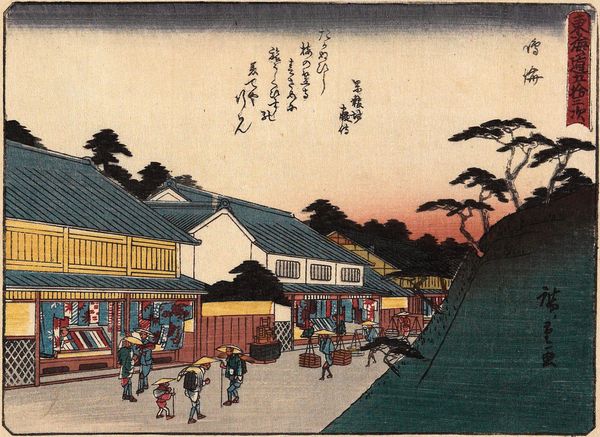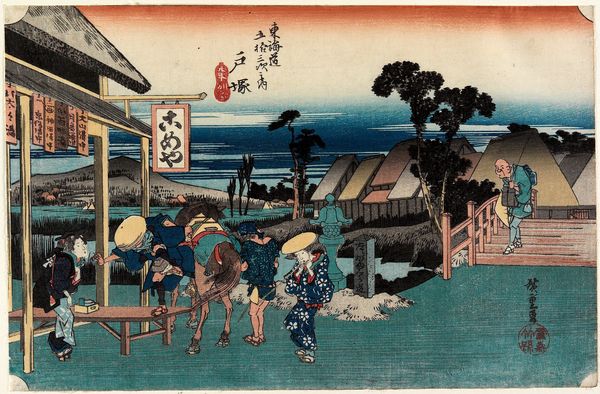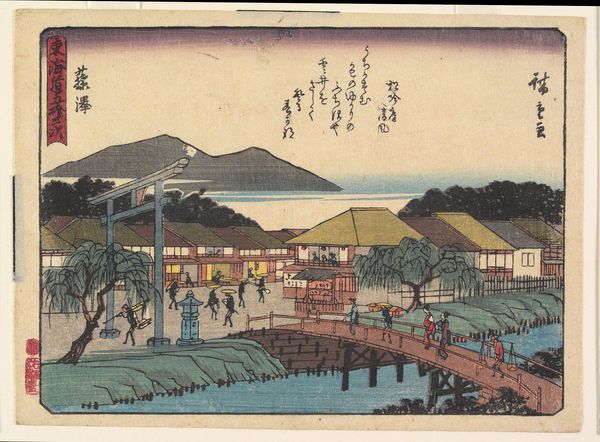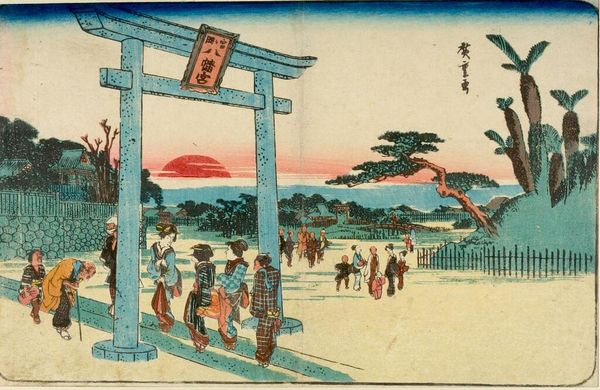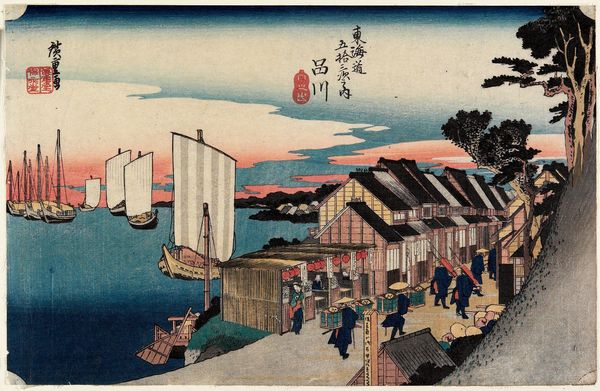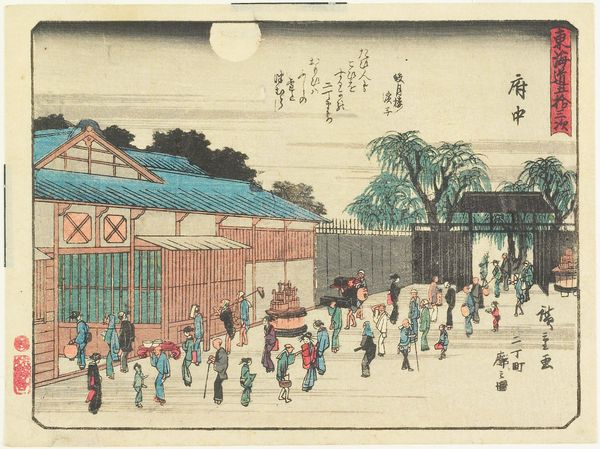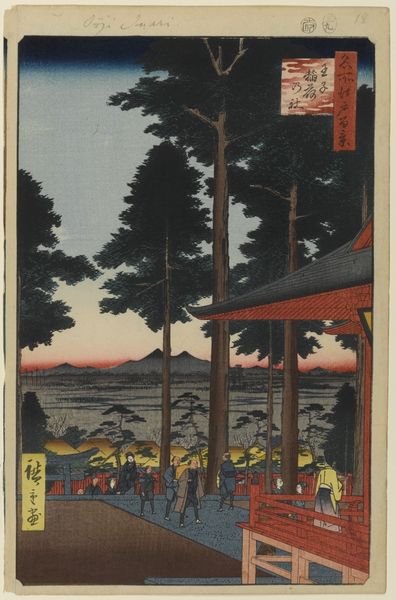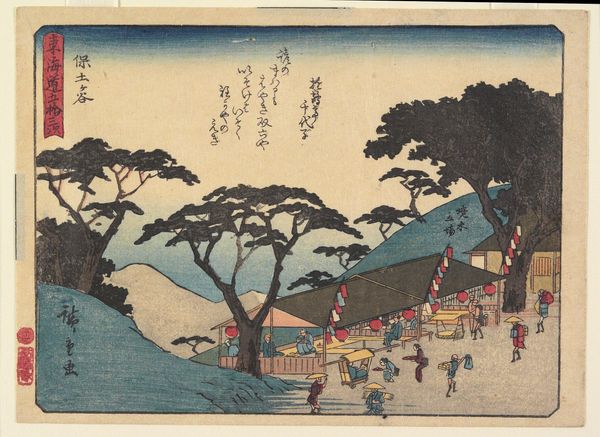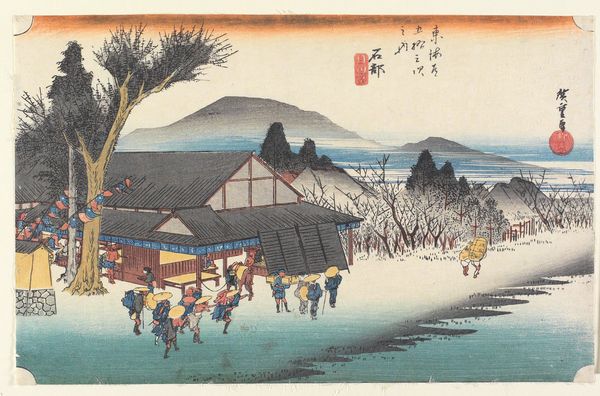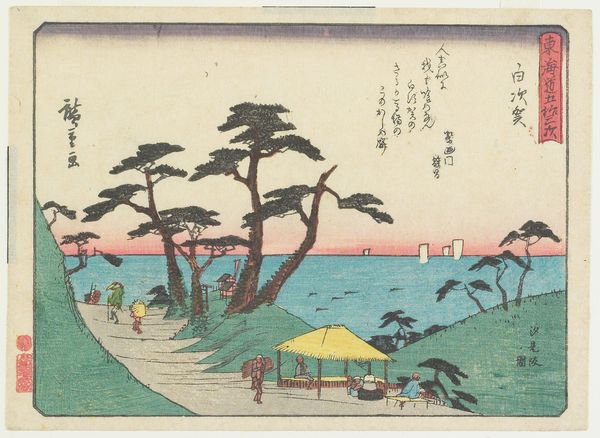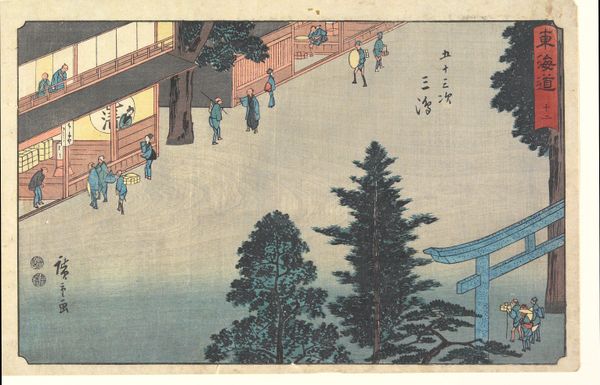
Tomigaoka Hachiman Shrine at Fukagawa c. 1832 - 1834
0:00
0:00
print, watercolor, ink, woodblock-print
# print
#
landscape
#
ukiyo-e
#
japan
#
watercolor
#
ink
#
coloured pencil
#
woodblock-print
#
mixed media
#
watercolor
Dimensions: 8 11/16 × 13 3/4 in. (22 × 35 cm) (image, horizontal ōban)
Copyright: Public Domain
Curator: Look at this compelling work by Utagawa Hiroshige, dating from around 1832 to 1834, titled "Tomigaoka Hachiman Shrine at Fukagawa". It's currently held in the collection of the Minneapolis Institute of Art. Editor: Immediately, I’m struck by the way Hiroshige uses the torii gate as a framing device. It pulls my eye right through to the vibrant horizon line, that gradation of the sky feels really calming. Curator: The medium itself—a woodblock print with ink and watercolor—speaks volumes about the culture of production in Edo-period Japan. Ukiyo-e prints like this were incredibly popular, owing to sophisticated carving and printing techniques and the accessibility of the materials involved. Editor: And notice the figures, especially those near the gate. They seem almost reverent, heading towards or coming from the shrine. The shrine itself, Hachiman, is associated with war and later became a guardian deity of Japan and its people. Curator: Yes, consider the layers of labor here: from the artisans meticulously carving the woodblocks to the printers carefully applying the colors. The commercial success of these prints demonstrates how art was becoming increasingly integrated into the lives of ordinary people. Editor: The composition leads me to think about pilgrimage. The torii gate marks a transition from the mundane to the sacred space, the horizon almost beckons individuals into a divine setting, and the landscape seems deliberately chosen for its iconic Japanese features to encourage those readings. Curator: What I find so remarkable is the sheer volume of these prints that were produced and distributed. They functioned as both art object and commodity. Hiroshige masterfully balanced artistic expression with the demands of a burgeoning market. Editor: Thinking about it, there is a duality—of journey, of reverence, and even in its production. That’s interesting to see reflected in what may, at first glance, seem a simple landscape scene. Curator: Absolutely. Examining the materials, the labor, and the modes of production reveals so much about the artwork’s function in society. Editor: Yes, by considering what the symbolic components suggest, we start to feel its enduring, wider impact beyond just the scene. Curator: Exactly. Thank you for exploring the intersection of cultural memory and tangible making of it through such prints with me. Editor: My pleasure; an excellent reminder of the layers within a scene like this.
Comments
No comments
Be the first to comment and join the conversation on the ultimate creative platform.


